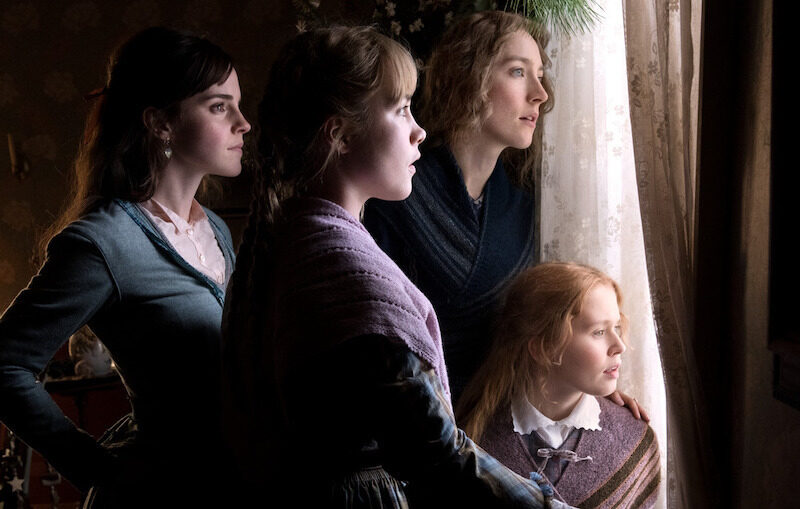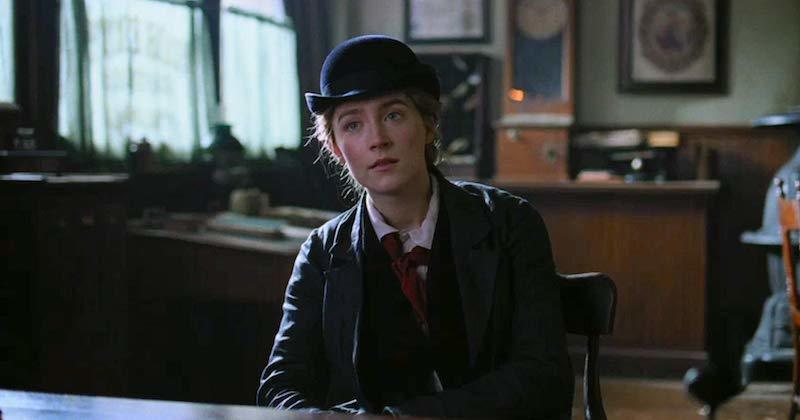A Remake Becomes a Surprising Reinvention
Review of Little Women at SIFF
Written by Teen Writer Taylar Christianson and edited by Press Corps Teaching Artist Kathy Fennessy

My first thought when Greta Gerwig’s Little Women adaptation was announced was “Do we really need another Little Women?” There are already over a dozen adaptations of Louisa May Alcott’s classic, some very recent, and this one felt like an Oscar-bait installment in Hollywood’s reboot fever. It’s another iteration of a well-known story, adapted by a famous director with an A-list cast, and all for another white woman’s take on a story about white women—not exactly groundbreaking in terms of representation or social commentary. What was the point of this?
However, I admit I’ll have to eat (some of) my words on this one. Gerwig’s Little Women isn’t without flaws, but it has beautiful cinematography, a strong cast, and a generally well-executed storyline—and as a literary adaptation, and especially one with so many predecessors, it deserves its praise. Gerwig’s screenwriting and directing give fresh new meaning to the tale of the March sisters’ lives in Reconstruction America, but keeps enough of its charm to feel familiar anyway.
The most prominent change to the original story is the way Gerwig tells it—flashing back and forth between the past, lit in cozy golden tones, and the colder, bluer present. This dichotomy gives a new, nostalgic angle to the story, making it one of a grown-up, worn-out March family looking back toward their idealized past. Saoirse Ronan’s Jo is the keystone of Gerwig’s story, constantly wishing her childhood could last forever as her sisters begin to grow away from it and from Jo herself. When present-day Jo returns home from New York, Beth (Eliza Scanlen) asks if she misses Laurie (Timotheé Chalamet), the best friend whose confession of love Jo turned down. Jo simply replies: “I miss everything.” Laurie is only one part of the blissful childhood that Jo constantly remembers, when every day brought a fresh adventure and her family was unseparated by marriage or death. Jo’s painful knowledge that she can never have this happiness again is the emotional foundation of Gerwig’s narrative.

Jo’s conflict comes to the forefront in the last act, as her sisters’ stories gradually fade into the background and the plot centers around Jo. As the film’s past advances to meet its present, a series of harsh disappointments in both timelines lead her back to her family home, emotionally wrecked and determined to never write again. Jo’s deep loneliness and longing to recover part of her childhood prompt her to doubt her rejection of Laurie, but he happily returns from Europe having moved on from Jo— one last slap in the face. Jo retreats to the attic where she spent her childhood writing and starts to write a new story, reaching back to the past. Gerwig gives Jo a bitter arc, full of loss and disillusionment, but also a chance to heal—she lets Jo write Little Women, the story of her family’s lives, and return to childhood in the only way she truly can. The Marches may never be as they were before, but they are still a love that Jo can come home to even in their tired, mixed-up, shrunken form.
The themes and emotions that Gerwig draws out of her source material create a fresh and unique Little Women. A reiteration of Louisa May Alcott for 2019 wasn’t the most original or necessary film to make, and it still only represents white women’s stories—but it manages to feel relevant in a way other recent adaptations have not. In the constantly growing canon and history of Little Women, Gerwig’s take stands out as an adaptation that turns a 150-year-old story into something absolutely new.
Lead photo caption: Emma Watson, Saoirse Ronan, Florence Pugh, and Eliza Scanlen in Little Women (2019).
This article was written as part of the Film Criticism Workshop presented in collaboration with SIFF, on January 17-25, 2020. This workshop was taught by Press Corps Teaching Artist and film critic, Kathy Fennessy.
The TeenTix Press Corps promotes critical thinking, communication, and information literacy through criticism and journalism practice for teens. For more information about other Press Corps programs including the Teen Editorial Staff or the TeenTix Newsroom, see HERE.


